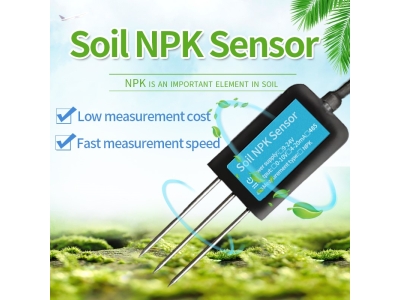
How does the soil temperature and humidity sensor work?
Soil temperature and humidity sensors are essential tools used in agriculture, environmental monitoring, research, and various other applications.

Soil temperature and humidity sensors are essential tools used in agriculture, environmental monitoring, research, and various other applications.
Soil temperature and humidity sensors are essential tools used in agriculture, environmental monitoring, research, and various other applications. These sensors provide valuable data that helps in understanding soil conditions, optimizing crop growth, and making informed decisions related to irrigation and land management. In this article, we will explore in detail how soil temperature and humidity sensors work, their underlying principles, and the significance of these sensors in various fields.

Understanding Soil Temperature and Humidity:
Soil temperature and humidity are key parameters that influence plant growth, soil health, and overall agricultural productivity. Temperature affects biological and chemical processes in the soil, while humidity levels impact nutrient availability, microbial activity, and plant water uptake. Monitoring these parameters accurately is crucial for ensuring optimal soil conditions and maximizing crop yield.
Working Principle of Soil Temperature Sensors:
Soil temperature sensors measure the temperature of the soil at various depths to provide insights into thermal properties and changes over time. These sensors typically consist of a temperature probe inserted into the soil, which detects the temperature based on the variation in electrical resistance, thermocouple voltage, or thermistor properties. The sensor sends temperature data to a data logger or monitoring system for analysis and interpretation.
Types of Soil Temperature Sensors:
There are several types of soil temperature sensors available, including thermocouples, thermistors, and resistance temperature detectors (RTDs). Thermocouples generate a voltage signal proportional to the temperature difference between two dissimilar metal wires, while thermistors change resistance with temperature variations. RTDs offer high accuracy and stability by measuring resistance changes in response to temperature fluctuations.
Working Principle of Soil Humidity Sensors:
Soil humidity sensors, also known as soil moisture sensors, measure the water content in the soil to assess moisture levels and irrigation needs. These sensors utilize different mechanisms to detect soil moisture, such as measuring the dielectric properties, electrical conductivity, or capacitance of the soil. Changes in moisture content affect these properties, allowing the sensor to quantify soil humidity levels accurately.
Types of Soil Humidity Sensors:
Common types of soil humidity sensors include capacitance sensors, resistive sensors, and frequency domain sensors. Capacitance sensors measure the dielectric constant of the soil, which correlates with moisture content. Resistive sensors use the electrical resistance of the soil to estimate moisture levels, while frequency domain sensors analyze the reflection of electromagnetic waves to determine soil moisture content.
Integration and Data Interpretation:
Soil temperature and humidity sensors are often integrated into automated monitoring systems or data loggers for continuous data collection. These systems record temperature and humidity readings at regular intervals, storing the data for further analysis. Data interpretation involves assessing trends, patterns, and anomalies in soil conditions to guide irrigation strategies, crop management decisions, and research initiatives.
Applications of Soil Temperature and Humidity Sensors:
Soil temperature and humidity sensors find diverse applications across agriculture, environmental science, forestry, horticulture, and geotechnical engineering. In agriculture, these sensors help optimize irrigation schedules, prevent waterlogging, and enhance crop growth. In environmental monitoring, they contribute to soil conservation efforts, climate change studies, and ecosystem restoration projects.
Benefits of Soil Temperature and Humidity Monitoring:
Effective monitoring of soil temperature and humidity offers numerous benefits, including increased crop yields, water conservation, reduced input costs, and enhanced soil health. By maintaining optimal soil conditions, farmers can improve resource efficiency, mitigate environmental impact, and achieve sustainable agricultural practices.
Conclusion:
Soil temperature and humidity sensors play a vital role in assessing soil conditions, optimizing agricultural practices, and supporting environmental monitoring efforts. Understanding the working principles of these sensors and their applications across various fields is crucial for harnessing their benefits effectively. By leveraging soil temperature and humidity data, stakeholders can make informed decisions, improve land management practices, and contribute to sustainable development goals.